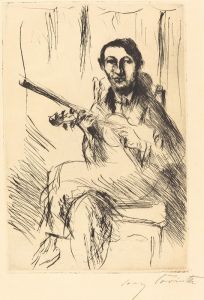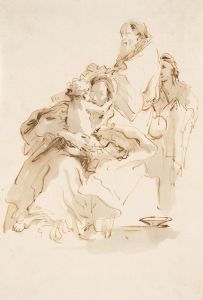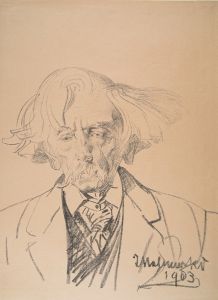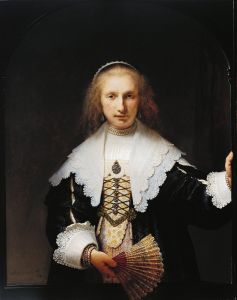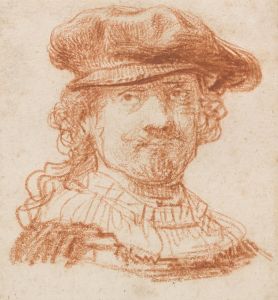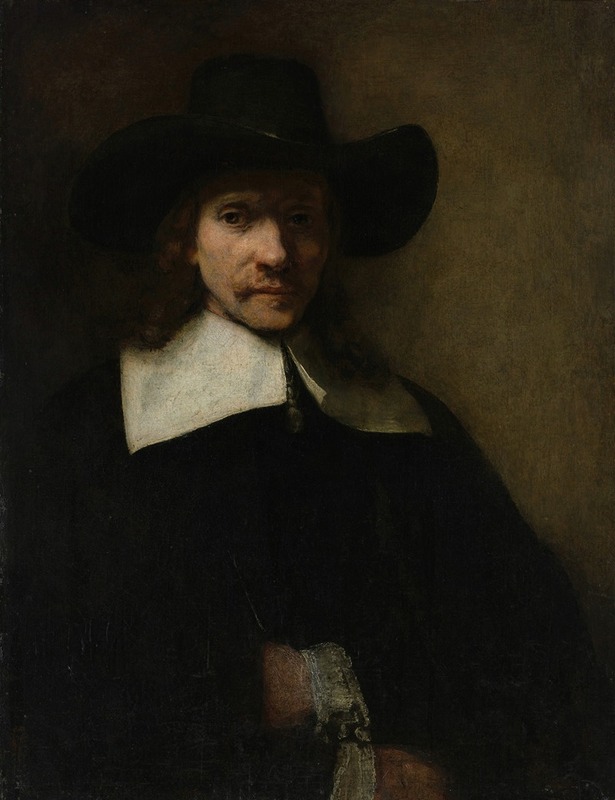
Portrait of a Man
A hand-painted replica of Rembrandt van Rijn’s masterpiece Portrait of a Man, meticulously crafted by professional artists to capture the true essence of the original. Each piece is created with museum-quality canvas and rare mineral pigments, carefully painted by experienced artists with delicate brushstrokes and rich, layered colors to perfectly recreate the texture of the original artwork. Unlike machine-printed reproductions, this hand-painted version brings the painting to life, infused with the artist’s emotions and skill in every stroke. Whether for personal collection or home decoration, it instantly elevates the artistic atmosphere of any space.
"Portrait of a Man" is an oil painting by the renowned Dutch artist Rembrandt van Rijn, created in the early 17th century. Rembrandt, born in 1606 in Leiden, Netherlands, is celebrated for his masterful use of light and shadow, as well as his profound ability to capture the human soul in his portraits. This particular painting is a testament to his skill and remains an important work within his extensive oeuvre.
The painting depicts an unidentified man, a common subject in Rembrandt's portraits, which often focused on capturing the essence of the sitter rather than their identity. The man is portrayed with a solemn expression, his gaze directed slightly away from the viewer, which adds a sense of introspection and depth to the portrait. Rembrandt's use of chiaroscuro, the contrast between light and dark, is evident in this work, highlighting the man's facial features and creating a three-dimensional effect.
The background of the painting is dark and unobtrusive, a typical feature in Rembrandt's portraits, which serves to draw the viewer's attention to the subject's face and expression. The man's attire is simple yet elegant, suggesting a person of some standing, though not necessarily of the highest nobility. The clothing is rendered with meticulous detail, showcasing Rembrandt's ability to depict textures and fabrics with great realism.
Rembrandt's portraits are known for their psychological depth, and "Portrait of a Man" is no exception. The artist's ability to convey the inner life of his subjects is one of the reasons his works have been studied and admired for centuries. This painting, like many of Rembrandt's portraits, invites viewers to ponder the thoughts and emotions of the sitter, creating a connection that transcends time.
The exact date of the painting's creation is not definitively known, but it is generally placed within the period of Rembrandt's early career, when he was establishing himself as a prominent portrait artist in Amsterdam. During this time, Rembrandt was gaining recognition for his innovative approach to portraiture, which combined traditional techniques with a new focus on realism and emotional depth.
"Portrait of a Man" is housed in the National Gallery of Art in Washington, D.C., where it is part of a significant collection of Rembrandt's works. The painting is an excellent example of Rembrandt's early style and provides insight into his development as an artist. It continues to be a subject of study for art historians and a source of inspiration for artists and admirers of Rembrandt's work.
In summary, "Portrait of a Man" exemplifies Rembrandt's mastery in portraiture, characterized by his use of light and shadow, attention to detail, and ability to capture the psychological complexity of his subjects. This painting remains an important piece within the context of 17th-century Dutch art and continues to captivate audiences with its timeless appeal.








